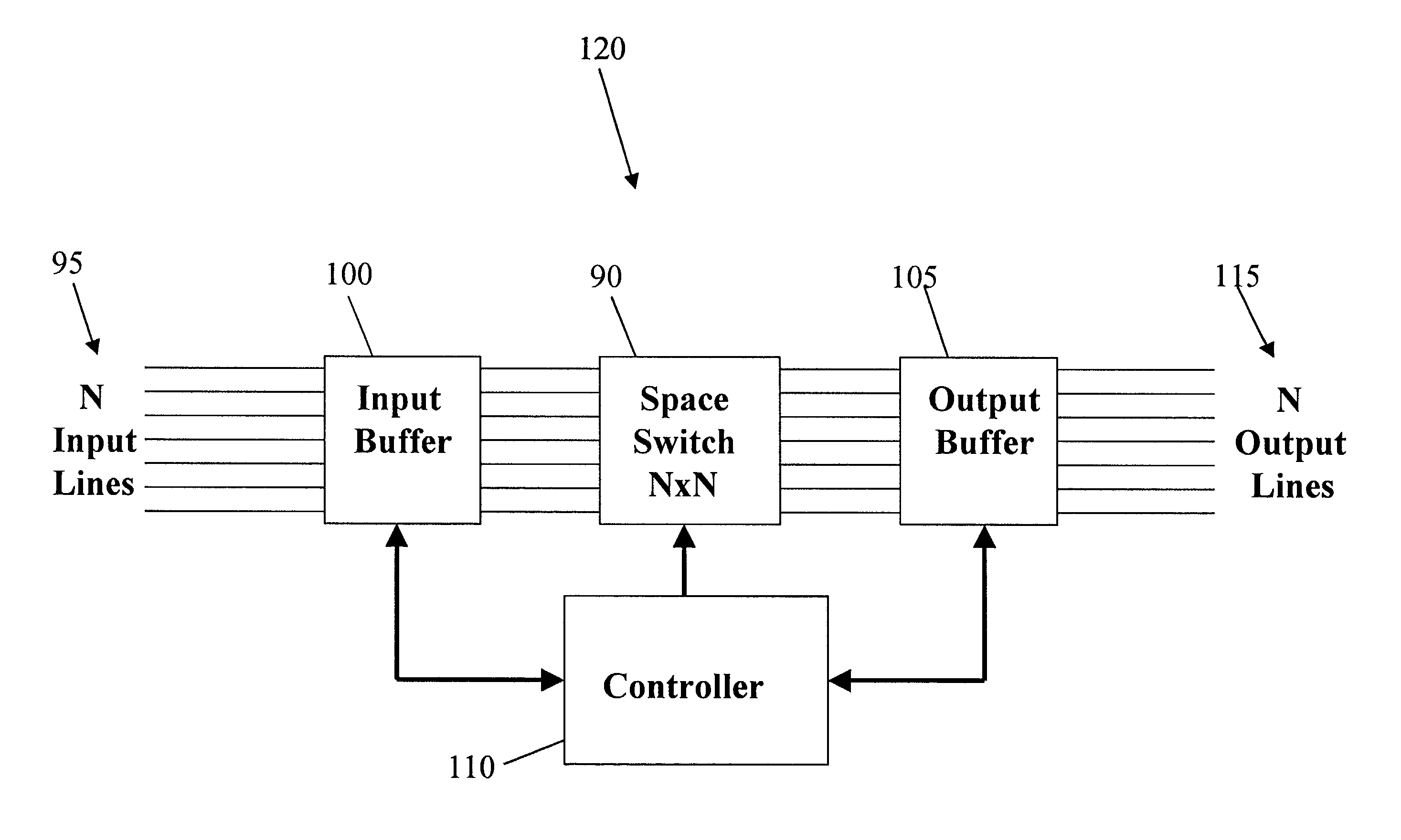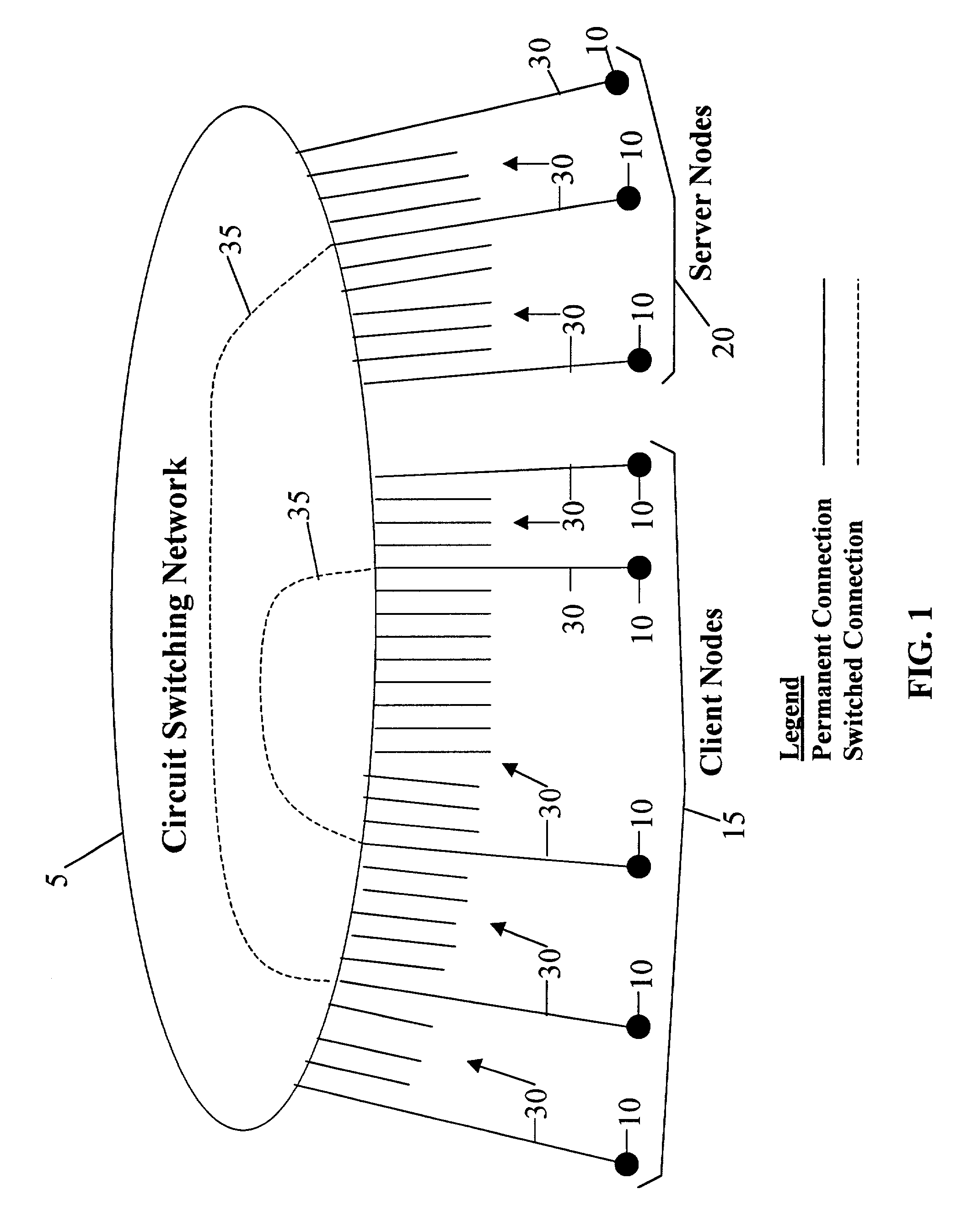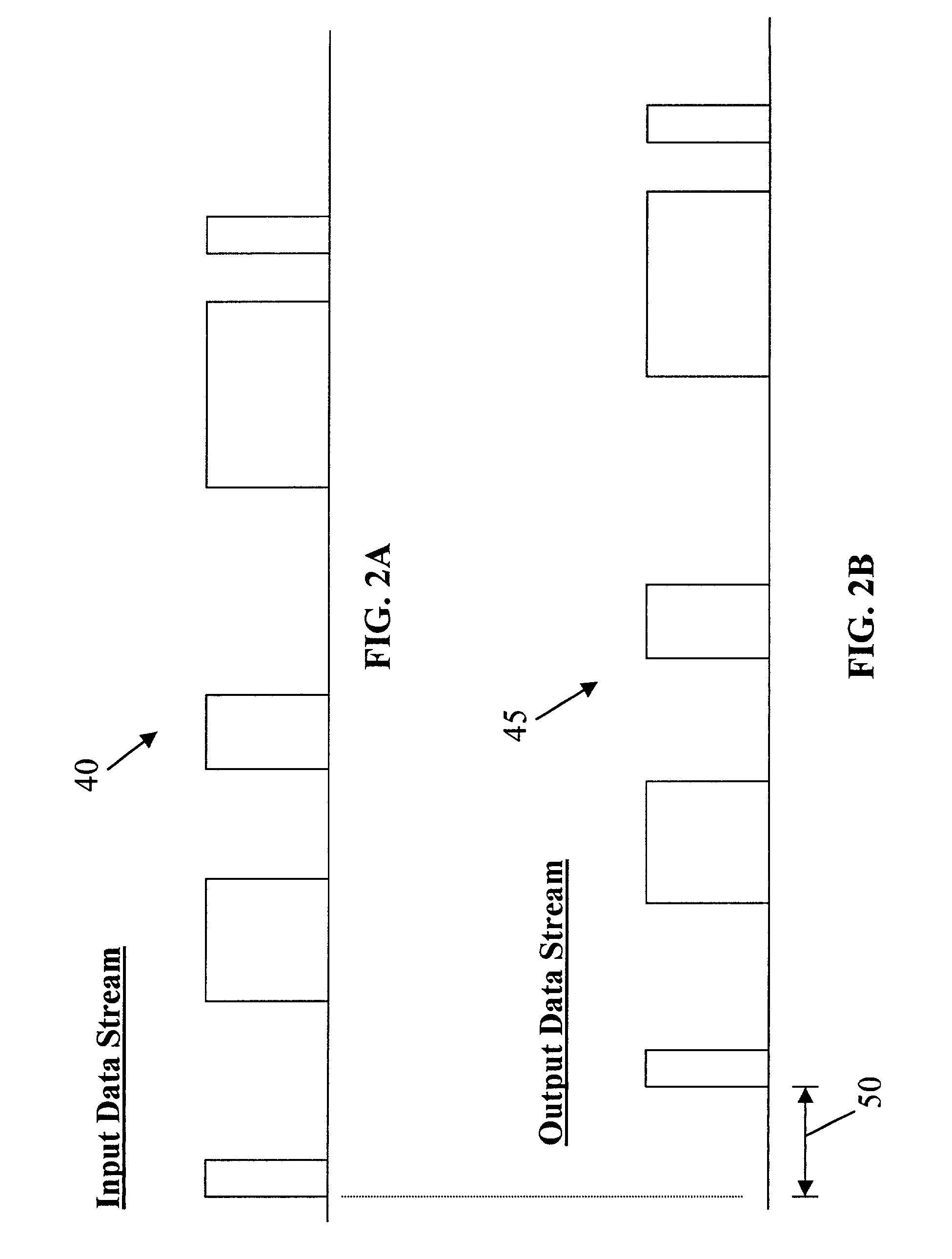Wide area multi-service communications network based on dynamic channel switching
a multi-service communication and channel switching technology, applied in data switching networks, duplex signal operation, digital transmission, etc., can solve the problems of slow subscriber data rate support, hampered network service integration, and low subscriber data rate that can be supported by narrowband isdn interfaces, and achieve efficient data transport.
- Summary
- Abstract
- Description
- Claims
- Application Information
AI Technical Summary
Benefits of technology
Problems solved by technology
Method used
Image
Examples
Embodiment Construction
The Concept of Dynamic Channel Switching
[0051]If there were no legacy networks and if a communications network were to be built from scratch, then it would not make sense to design separate networks, with different protocols, for voice, video, and data communications. Instead, it would make sense to design an integrated network that would provide a full range of communication services using common protocols and similar modes of operation.
[0052]In The Background Of The Invention, significant differences between circuit switching and packet switching were reviewed. However, circuit switching and packet switching also have certain things in common. The present invention utilizes this commonality and discloses how the features of both circuit switching and packet switching can be combined in an integrated network.
[0053]The present invention discloses a network architecture based for an integrated services network that is based on dynamic switching of the channels assigned to connections...
PUM
 Login to View More
Login to View More Abstract
Description
Claims
Application Information
 Login to View More
Login to View More - R&D
- Intellectual Property
- Life Sciences
- Materials
- Tech Scout
- Unparalleled Data Quality
- Higher Quality Content
- 60% Fewer Hallucinations
Browse by: Latest US Patents, China's latest patents, Technical Efficacy Thesaurus, Application Domain, Technology Topic, Popular Technical Reports.
© 2025 PatSnap. All rights reserved.Legal|Privacy policy|Modern Slavery Act Transparency Statement|Sitemap|About US| Contact US: help@patsnap.com



